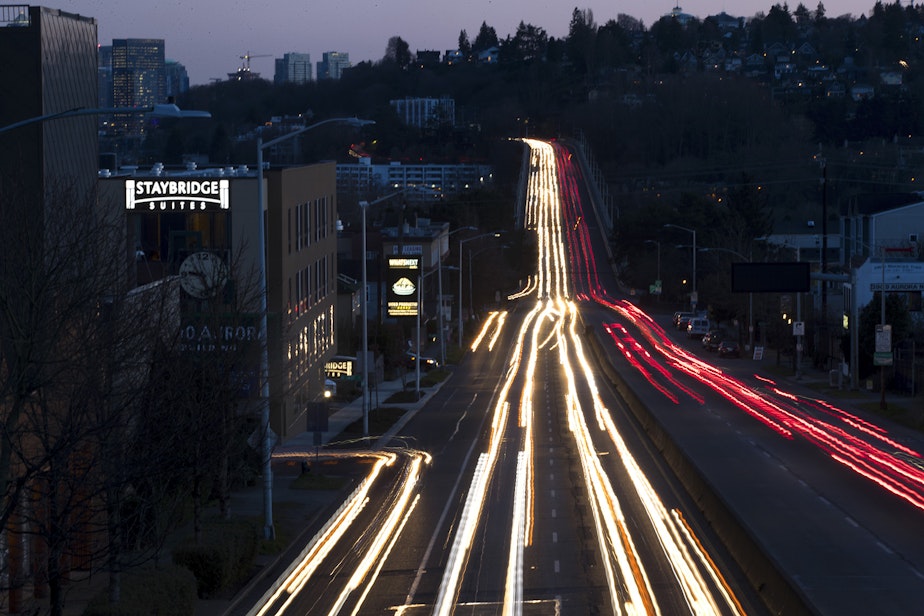Despite fewer cars on the road, Seattle traffic deaths remain steady

The city of Seattle has an ambitious goal of eliminating all traffic fatalities and serious injuries by the year 2030.
But even though fewer people are driving due to the pandemic, preliminary data shows traffic deaths in Seattle barely dropped in 2020. KUOW spoke to Seattle Times Traffic Lab reporter Michelle Baruchman about the findings.
I think the top-line result shows that even with less traffic on the road, the number of people who were killed on Seattle streets last year didn't drop significantly compared with vehicle traffic volumes. 24 people died. Most of those were pedestrians. That number is tied with 2013. And it's just two people less than in 2019, which was the deadliest year in recent history.
The numbers include pedestrians, passengers in cars, bicyclists, and motorcyclists, as well as people who hit an object in the road and died.
Sponsored
The Seattle Department of Transportation theorized that one explanation [for why the traffic death rate remained steady, despite less drivers being on the road] is that when you're in bumper to bumper traffic, and you're moving just an inch every couple of minutes, it's hard for you to move fast and hit someone. When there's less traffic on the road, less congestion that you're driving through, it's easier to drive at faster speeds.
While maybe fewer overall crashes occurred, and this year's numbers show that there were fewer serious injuries, the crashes that did occur were more likely to be fatal. And again, even though it’s two less, it's still people's lives and someone's family member or friend.
[Seattle's numbers] were in line with other cities like New York, Philadelphia, Austin, Texas, and cities in North Carolina showed similar data. Seattle's not unusual for the numbers that were reported this last year. And similar explanations have been given in other cities as well.
Sponsored
But, Seattle committed to Vision Zero, which is a nationwide program that seeks to eliminate traffic fatalities and serious injuries by 2030. Again, even though Seattle's not an anomaly, it's still not on track to reach its goal.
In the summer of 2019, the Seattle Department of Transportation installed leading pedestrian intervals. It gives pedestrians a head start when crossing into intersections. People walking will see that white, flashing hand. A few seconds before, they'll have a chance to get out into the intersection, before drivers are given a green light to either go straight or turn at the same time.
That's designed to help make the pedestrians more visible for drivers. People are already in the middle of the intersection and drivers can see them when they are turning. And in December of 2019, Mayor Jenny Durkan announced that speed limits on all arterials would be lowered to 25 miles per hour.
Sponsored
There are efforts underway this year to improve the design on Rainier Avenue South, which is another very deadly and dangerous street in Seattle. There will be a third phase of improvements south of Rainier Beach. There will be some improvements planned on Sandpoint Way, and the Seattle Department of Transportation is in discussions with the Washington State Department of Transportation as well to make changes on Aurora.
Those are some of the most dangerous areas. They're focusing on where the need is and in particular, they're focusing on the streets that run through neighborhoods with high communities of color, to make sure that any policies they implement are equitable.
Listen to the interview by clicking the play button above.


